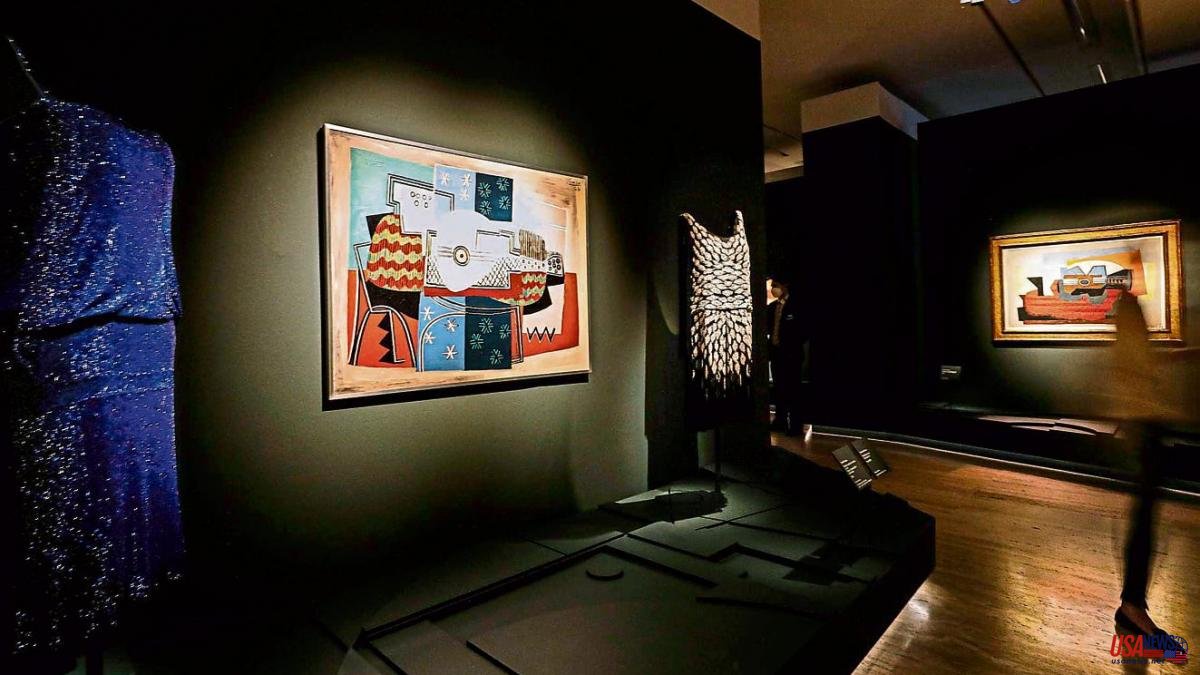"Fashion goes out of style. Style, never", assured Gabrielle Chanel. The phrase could be applied both to her suits, which are still as surprisingly modern as when she designed them a century ago and freed women from corsets, and to the painting and sculpture of Pablo Picasso, a genius capable of creating a new classicism and with whom Coco Chanel maintained since they met in 1917, both already in their thirties and famous, a long friendship that, says the great biographer John Richardson, It included some love affair in the early twenties, an affair that did not prosper, she reflected, because she was too famous and not docile enough to last: “They were both determined, strong-willed, controlling and dominant, perhaps too similar Then Olga Khokhlova, Picasso's first wife, would be a loyal client of Chanel.
And Picasso's cubism, turned into a spirit of the times in the 1920s, would decisively influence Chanel's designs from her first innovative designs. Jean Cocteau, friend and collaborator of both, assured by her disruptive character: "Chanel is to fashion what Picasso is to painting". Both reigned in their worlds and created a myth that still survives. And the Thyssen Museum in Madrid has made Cocteau's adage good and, as part of the commemoration of the 50th anniversary of the death of the genius from Malaga, opens the great Picasso/Chanel exhibition until January 15, with dozens of paintings and drawings of Picasso faced with more than 40 spectacular Chanel suits, showing their glances and complicity back and forth.
To begin with, they worked together on two artistic projects to which the exhibition dedicates special spaces: Sophocles' Antigone in which Cocteau commissioned Picasso for the set and Chanel for the costumes because "she was the greatest couturière of our time and I can't imagine to the poorly dressed daughters of Oedipus”; and the ballet The Blue Train at the Paris Opera, for which Diaghilev insisted that Picasso let him use his Two Women Running on the Beach as the curtain image, which can be seen in the Thyssen exhibition, and for which Chanel made costumes for the dancers inspired by the sports models she made for her clients, following instructions from Cocteau, who wanted a non-theatrical, cutting-edge wardrobe. In fact, Picasso had already been struck by Chanel's daring bathing suits on the beaches of Biarritz and reproduced them in the small but fascinating 1918 work The Bathers, also in the exhibition.
But the exhibition curated by Paula Luengo also points out, confronting paintings and suits, a clear influence of Picasso's cubism in Chanel's creations: the geometric language of straight and angular lines of cubist paintings and sculptures is reflected in Chanel's first designs, that triumph among the most liberated and modern women. And in addition, the creator adopts the chromatic reduction practiced by Braque and Picasso: she manifests a predilection for white, black and beige, colors that fit perfectly with the sober tones of early analytical cubism.
But in addition, Luengo points out, just as Picasso includes in his collages materials and objects that he finds in flea markets with coarse and rough textures, including newspapers and fabrics, and even a dirty shirt, rope and nails, and in the same line Chanel chooses humble fabrics such as cotton and woolen knitwear – also driven by war shortages – and rabbit, beaver or squirrel skins, less luxurious than usual. "The simplification and purification characteristic of Chanel's designs are a reflection of Cubism," says sociologist Gilles Lipovetsky.
In this sense, her famous perfume, Chanel No. 5, from 1921, sums up this approach: Hélène Fulgence, director of Patrimoine de Chanel, who has lent numerous suits for the exhibition, underlines at the press conference that it is "the first abstract perfume , complex, vibrant, in a very pure bottle that bears the number of the laboratory sample you have chosen, as simple as that”. A transparent bottle with a rectangular and minimalist label that shows it confronts the bottles that Picasso represents in some still lifes from 1912.
In an exhibition with remarkably dim lighting so as not to damage the dresses or the drawings, one of the specific sections is dedicated to the Russian ballerina Olga Khokhlova, whose wedding with Picasso was attended by Chanel, who according to Cocteau designed the wedding dress. “I was holding a gold crown on Olga's head and we all seemed to represent Boris Godunov. A very beautiful ceremony”, wrote the poet and playwright. Chanel became one of the favorite designers, as the sample shows in photos and videos. Also in the paintings in which Picasso portrays her, in some of which the linear and simple cut of Chanel garments is identified.
Precisely the image that presided over the press conference was powerful: a portrait of Olga lent by Bernard Ruiz-Picasso, who yesterday was "very excited to see my grandmother on the screen and to celebrate the 20th century through two important figures and essential and necessary in our world, especially in these days when we live in difficult times in Europe and worldwide there are many questions”. “I am a bit obsessed with my grandfather's work but not only”, he smiled, and assured that with an exhibition “of this level we can learn a lot. Art allows us to exchange ideas and evolve.”













